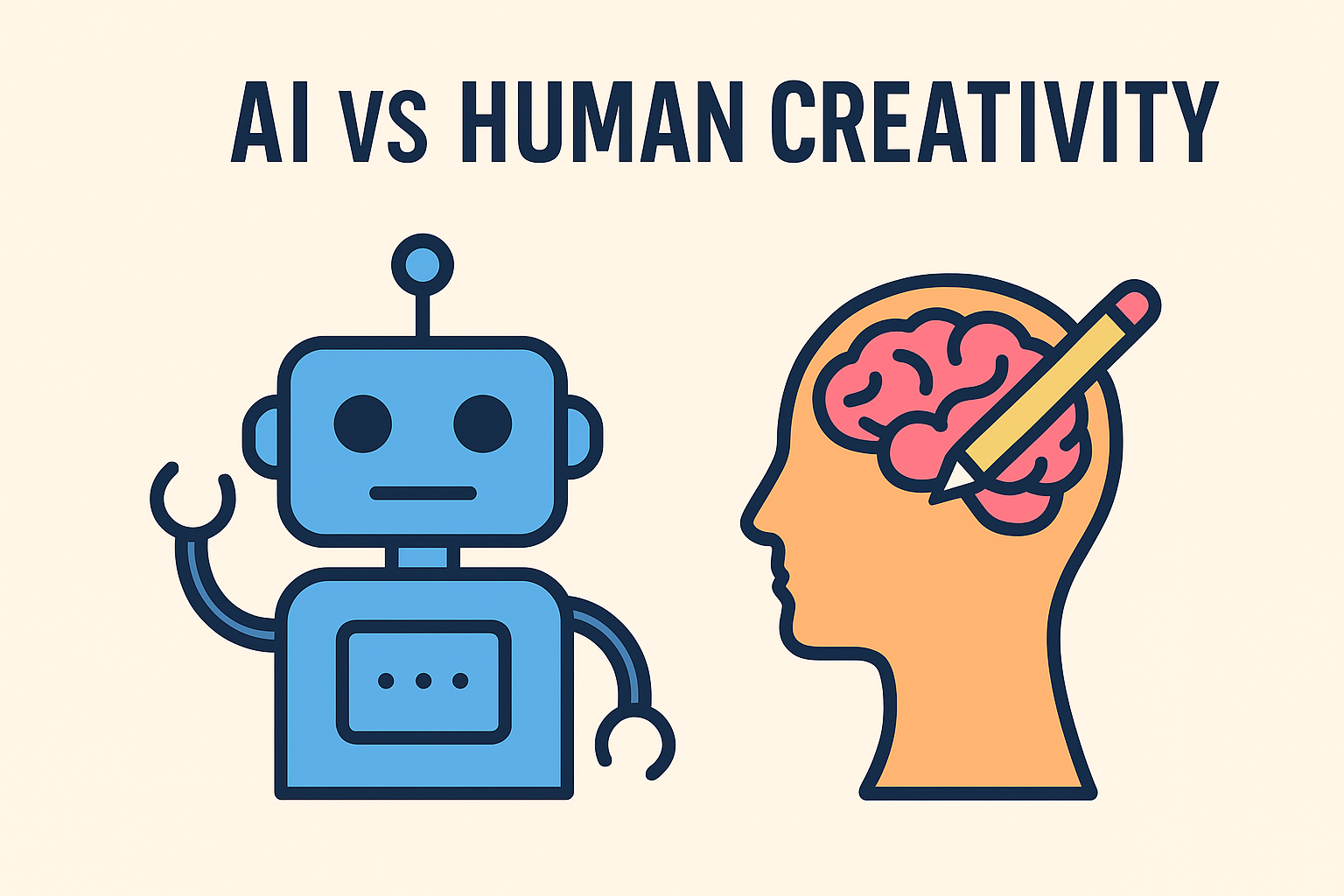AI vs Human Creativity: Can Artificial Intelligence Truly Replace Human Imagination

Introduction
Artificial Intelligence (AI) has taken the world by storm. From generating realistic images to writing articles, composing music, and even creating business strategies, AI tools are increasingly showcasing skills that once seemed exclusive to human beings. But this raises a big question: Can AI truly replace human creativity, or is real imagination something only humans can achieve?
In this article, we’ll dive into the debate of AI vs human creativity, exploring their strengths, weaknesses, and future possibilities. By the end, you’ll have a clear understanding of how AI can complement human imagination without fully replacing it.
—
What Makes Human Creativity Unique?
Human creativity is more than just putting ideas together. It involves:
Emotions and experiences – People create based on joy, sadness, curiosity, and life lessons.
Imagination – The ability to think beyond the present and visualize new realities.
Cultural influence – Art, music, and stories often reflect traditions and social values.
Purpose – Humans create not only to solve problems but also to express themselves and connect with others.
This emotional and cultural depth gives human creativity a personal touch that machines currently cannot replicate.
—
How AI Creates: The Basics
AI creativity is powered by data and algorithms. For example:
Image generation tools like DALL·E and MidJourney create stunning artwork based on text prompts.
Writing tools like ChatGPT draft essays, poems, or even books within seconds.
Music AI systems can compose original soundtracks by analyzing thousands of existing songs.
But AI is not truly “imagining” these creations. Instead, it learns from existing data, detects patterns, and produces something new by remixing knowledge.
—
Strengths of AI in Creativity
AI may not “feel” emotions, but it has several advantages when it comes to creative tasks:
Speed – AI can create in seconds what might take humans days or weeks.
Limitless variations – AI can produce hundreds of designs or ideas instantly.
Data-driven insights – AI can analyze trends and suggest creative ideas backed by evidence.
Accessibility – Even people without artistic or writing skills can create professional content with AI.
This makes AI especially useful in industries like marketing, advertising, design, and education.
—
Limitations of AI Creativity
Despite its strengths, AI has major limitations:
No genuine emotions – AI cannot feel happiness, pain, or passion, which often inspire human art.
Dependence on data – AI only works with what it has been trained on. It cannot imagine beyond the patterns it knows.
Lack of originality – AI creations are often combinations of existing ideas, not truly new concepts.
Ethical challenges – AI sometimes borrows heavily from human work, raising questions about ownership and plagiarism.
This proves that while AI can mimic creativity, it struggles with the deeper essence of human imagination.
—
Case Studies: AI in Action
1. Art and Design – Artists are using tools like MidJourney to generate creative concepts, but they still refine and give personal meaning to their work.
2. Writing and Content Creation – AI can draft blog posts or social media captions, but humans add storytelling, personality, and authenticity.
3. Music – Platforms like AIVA compose background music, but hit songs still need human passion, lyrics, and emotional depth.
In all these cases, AI acts as a partner rather than a replacement.
—
Human + AI Collaboration: The Best of Both Worlds
Instead of fearing AI, many creators are learning to collaborate with it:
Writers use AI for idea generation but keep their unique voice.
Designers use AI for drafts but add emotional touches.
Businesses use AI for speed but depend on human creativity for brand identity.
This “partnership model” allows humans to stay original while benefiting from AI’s efficiency.
—
Ethical and Philosophical Questions
The rise of AI creativity also raises important debates:
Who owns AI-generated content? The user, the developer, or the AI itself?
Is AI art truly “art”? If it lacks emotion, can it be compared to human masterpieces?
What happens to creative jobs? Will AI reduce opportunities, or create new ones?
These are questions society must address as AI continues to evolve.
—
The Future of Creativity: Competition or Collaboration?
Looking ahead, AI will continue to grow more advanced. However, experts agree that AI will not completely replace human imagination. Instead, the future of creativity lies in collaboration, where:
AI provides speed, scale, and ideas.
Humans provide vision, meaning, and emotional depth.
The result will be a new creative era where AI enhances human imagination rather than competing with it.
—
Conclusion
Artificial Intelligence has proven that it can be creative — but in a different way from humans. While AI generates ideas, art, and music at an impressive scale, it lacks the emotional depth, originality, and cultural context that make human imagination unique.
So, can AI truly replace human creativity? Not entirely. Instead, it should be seen as a powerful tool that boosts human imagination, helping people create more efficiently while keeping the soul of creativity alive.
👉 What do you think? Can AI ever match the depth of human imagination, or will creativity always remain a uniquely human gift? Share your thoughts below!